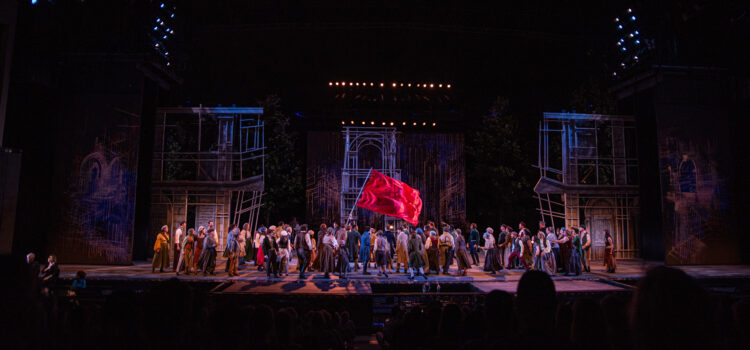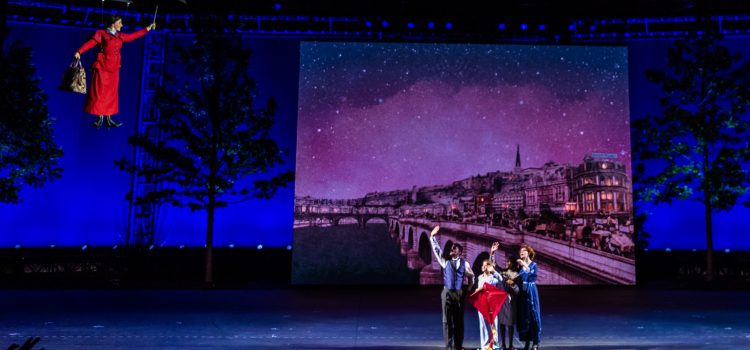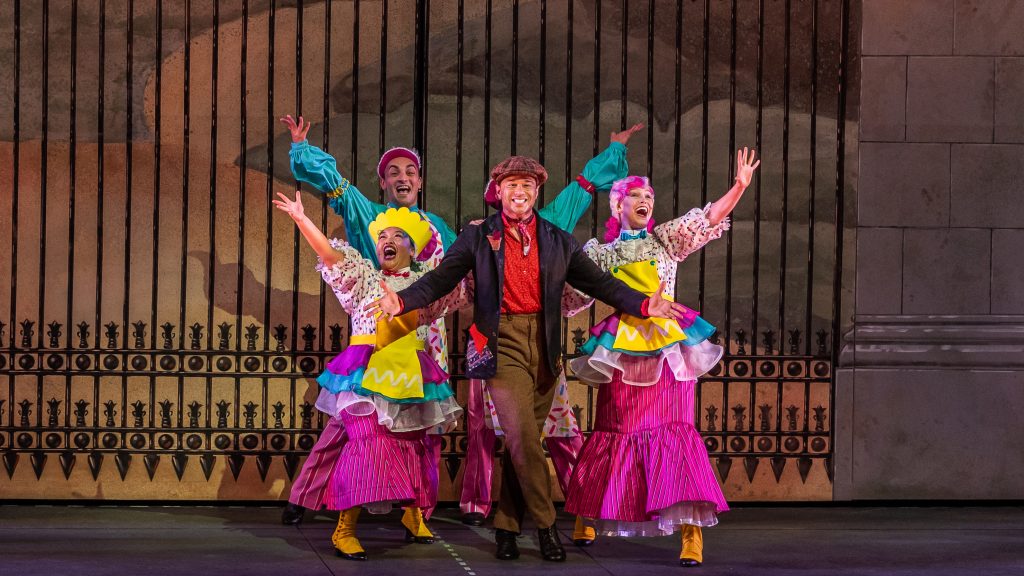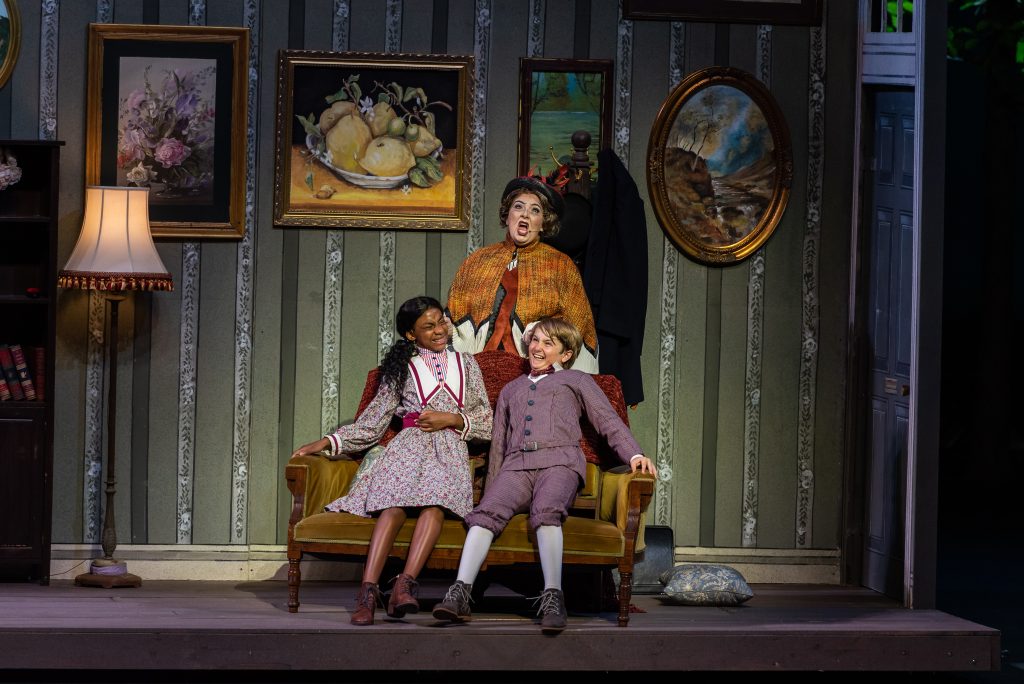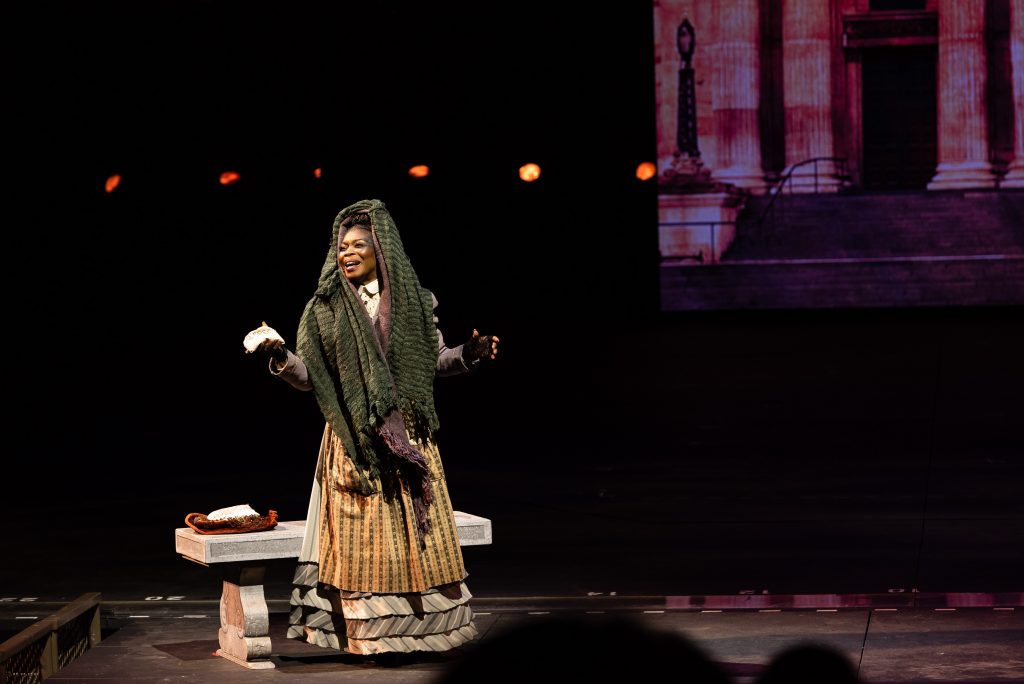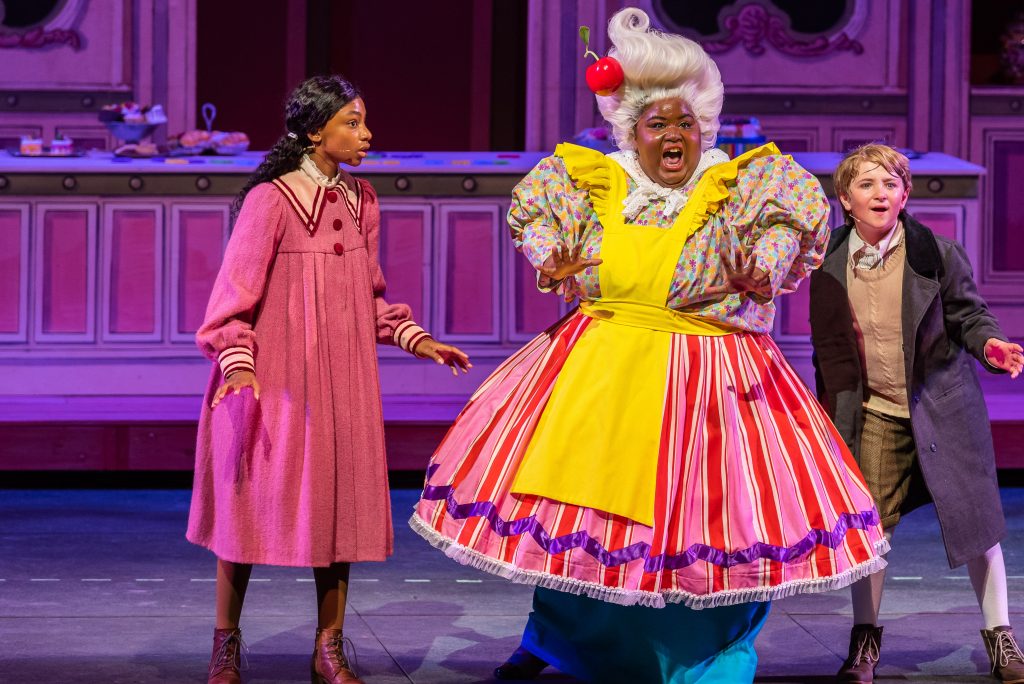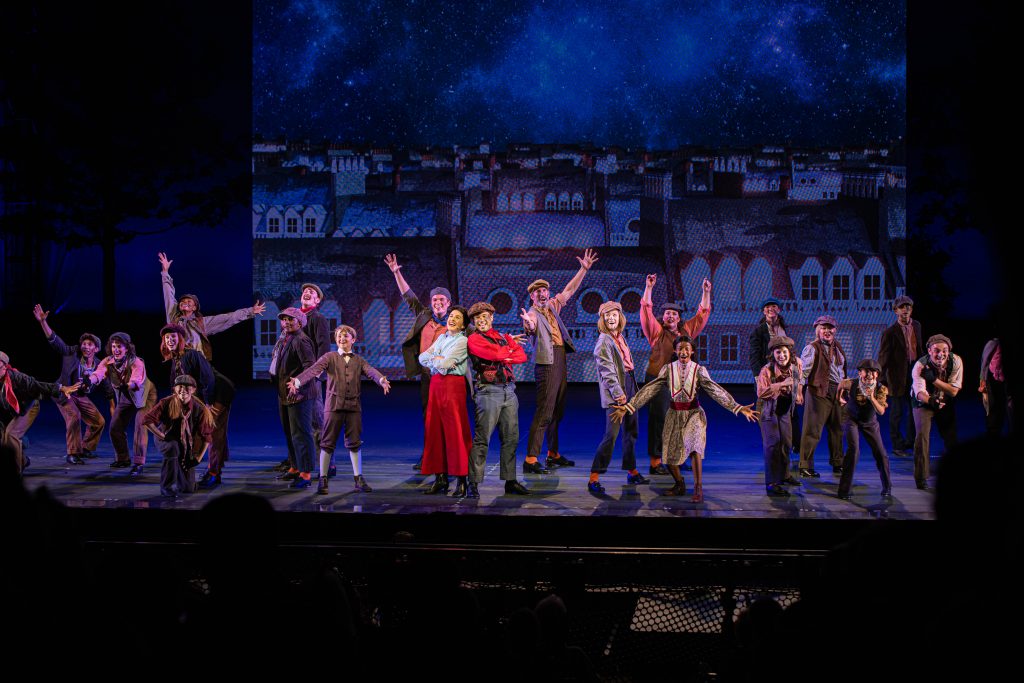By Lynn Venhaus
Dream roles, meet dream cast. The highest caliber of vocal excellence on display cannot be understated, for this third mounting of “Les Miserables” at the Muny shimmers with glorious voices.
In the iconic roles of fugitive ex-convict Jean Valjean and his relentless pursuer Inspector Javert, Broadway veterans John Riddle and Jordan Donica surpassed their powerhouse reputations with a fiery tango as the obsessive adversaries.
Riddle, a Muny standout who won the St. Louis Theater Circle Award last year for his tour de force in “Chess,” and Donica, Tony Award nominee as Lancelot in ‘Camelot,” wowed in all aspects.
Let’s put it this way: If they sang the words to websites’ terms and conditions, you’d listen intently to every phrase before clicking ‘accept.’
With his pure, exquisite tenor and nuanced falsetto, Riddle’s stunning rendition of the showstopping emotional ballad “Bring Him Home” ranks among the most heartfelt Muny moments of all time, and his impassioned “Who Am I?” was breathtaking. His performance had to have pierced everyone’s hearts all the way to the back row.
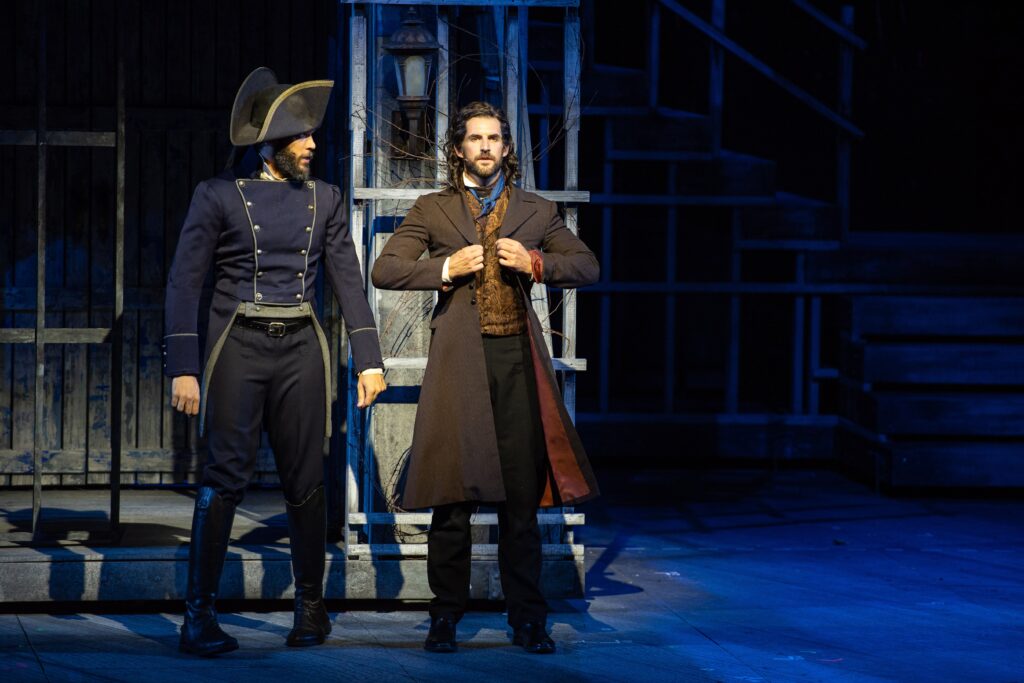
Donica’s rich baritone intensity on “Stars” and “Soliloquy” depicted Javert’s inner turmoil.
They are the lightning to the chorus’ thunder, as the sprawling ensemble’s lush harmonies soared into the beautiful summer night of June 18.
And the Muny audience – 7,700 on Tuesday – leaned in, its affection palpable. (And more than a few misty eyes noticeable). You could have heard a pin drop during its 2 hours and 45 minutes runtime.
The epic scope of this stirring sung-through adaptation of Victor Hugo’s 1,463-page novel from 1862 on post-Revolutionary France makes for a challenging and daunting production, especially for a Muny-sized version.
With its massive cast, towering multi-level set revolving on the turntable, and complex story to tell, the revered classic requires everyone involved to be at the top of their game.
While a show of this magnitude isn’t without flaws, the achievement of pulling off one of the grandest musicals ever represents the Muny at its finest. Previous acclaimed productions were in 2007 and 2013, and that one remains burned in my brain as among the best.
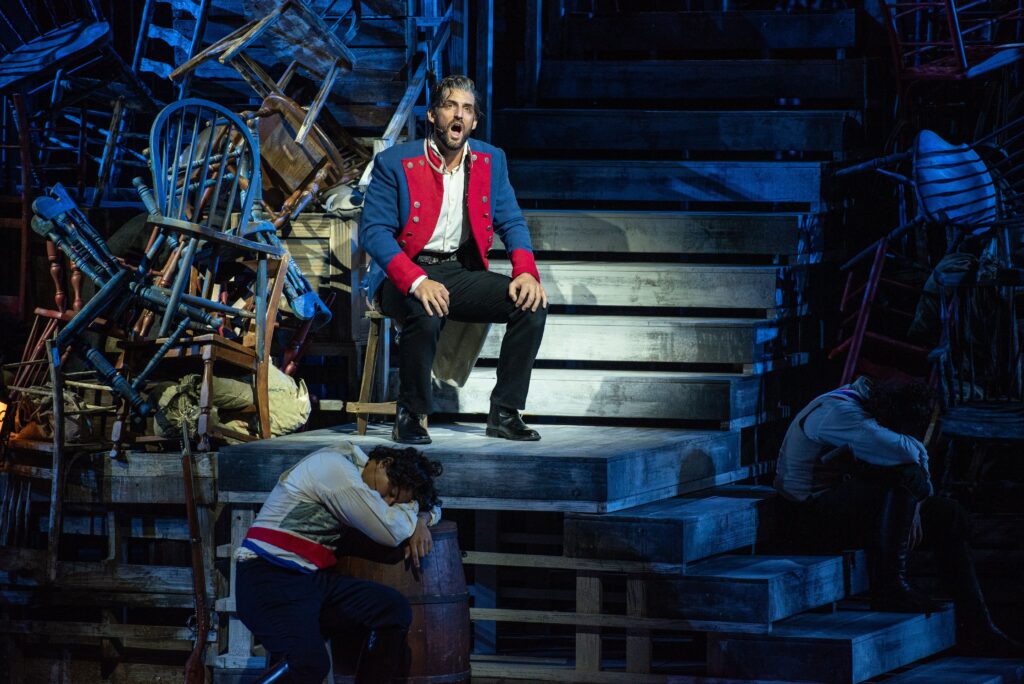
First, this is “Les Miserables.” Beloved. Adored. Claude-Michel Schönberg’s and Alain Boublil’s musical sensation started a landmark world-wide run in London in 1985 before it came to Broadway in 1987, packing houses for 16 years. It was revived in 2006 and 2014.
Over three decades, it has been seen by 130 million people in 53 countries and is the sixth longest-running Broadway musical of all-time. Currently, a U.S. national tour is underway.
Fun fact: This company’s director Seth Sklar-Heyn, music director James Moore and choreographer Jesse Robb are the core artistic team behind that current tour. Sklar-Heyn is also executive producer of all “Les Miz” companies in the U.S., on behalf of the legendary impresario Cameron Mackintosh.
The basics are thus: French peasant Jean Valjean served nineteen years for stealing a loaf of bread for his sister’s starving child, and breaks his parole. He is aided by a merciful bishop in Digne (Ken Page) and makes a fresh start, but is hunted by Javert.
Redeeming himself, he has assumed a new identity as Monsieur Madeleine, a wealthy factory owner and mayor of Montreuil-sur-Mer.
Eventually, a group of young idealistic students attempt to overthrow the government at a barricade in Paris. It’s 1832 and the city is in upheaval because General Lamarque, the only official who seems to care about the poor, is about to die.
The Paris Uprising battle scenes are powerful and dramatic, crystallizing several of the plot points.
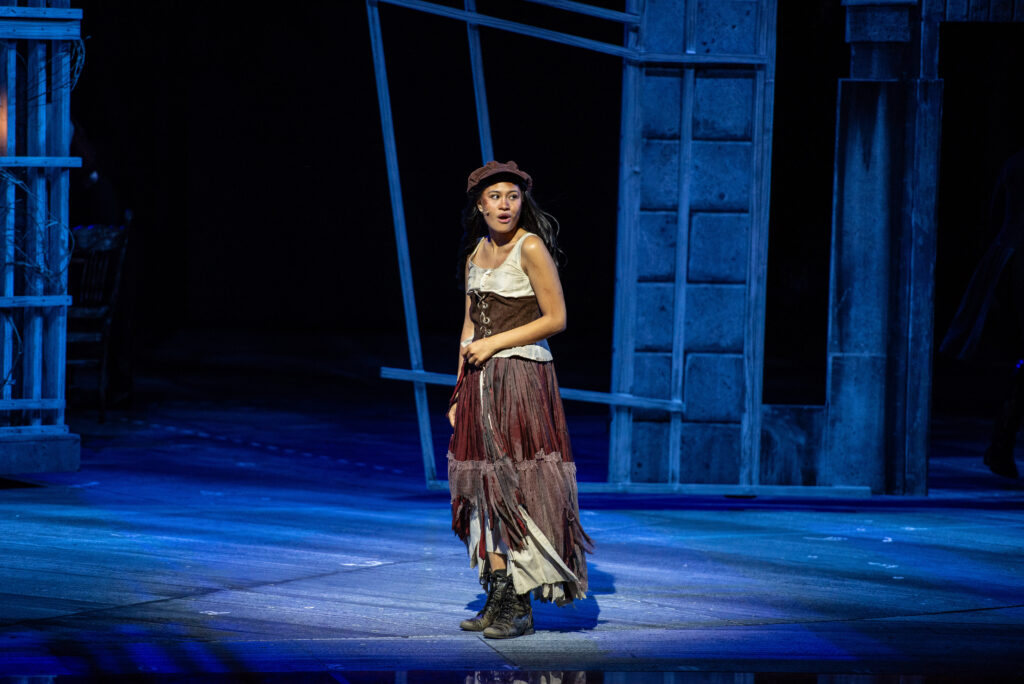
There are many moving parts, by virtue of the dense story’s blend of revolution and romance, good and evil. While I’m a fan, some of the subplots can be confusing if you aren’t overly familiar with the source material.
A prerequisite is reading the show synopsis, which takes up a full page in the Muny program. Trust me, you need it. It can be overwhelming for newbies and if it’s been awhile since you saw it, doesn’t hurt to refresh.
It races through many years and multiple locations, so buckle up. One needs to focus on who is propelling the plot forward, and there are times when you can’t necessarily spot that character right away because of the busyness.
For instance, I don’t think this staging made Fantine’s predicament clear in a crowded factory scene, nor was an artistic choice for Javert’s death (spoiler alert) as effective as what I’ve seen before.
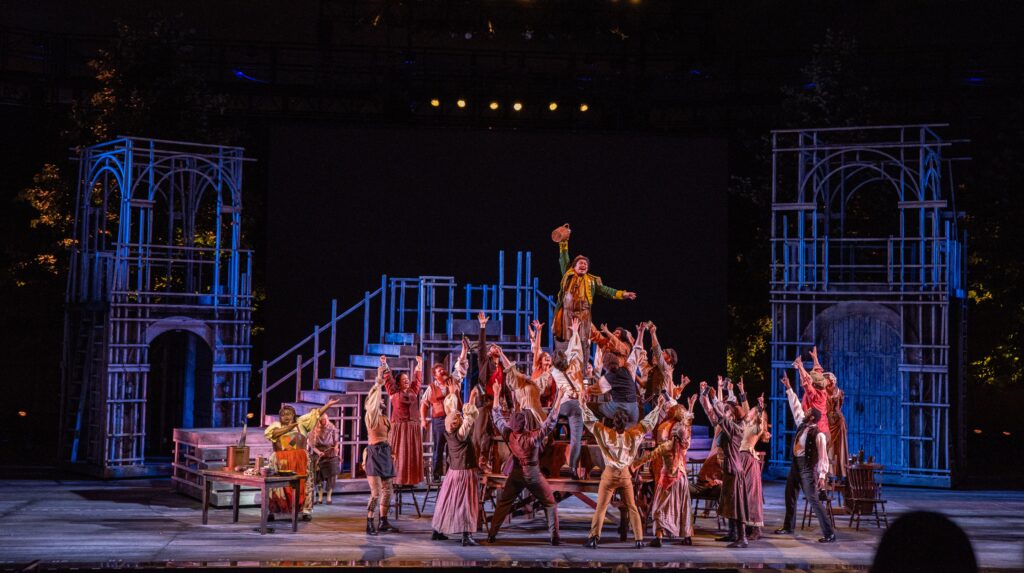
No matter if it’s your second time or 12th, there are certain expectations every fan has. Not all interpretations can satisfy pre-conditioned notions in one’s head, but no one can quibble with the enthralling vocals.
While most shined in their solo moments, the actors’ emoting varied. Fantine has limited time to establish her plight as a desperate and destitute single mom, although Teal Wicks superbly delivered a touching “I Dreamed a Dream,” if not nailing the role’s set-up.
Red Concepcion and Jade Jones as the Thenardiers were not as funny as they could have been, for a show in need of the broad comic relief that “Master of the House” and “Beggars at the Feast” provides. They were less buffoonish and more pathetic.
A major crowd-pleaser was scene-stealer Will Schulte as the streetwise urchin Gavroche, endearing in his number “Look Down.” Another youngster, Kate Kappel, sweetly sang “Castle on a Cloud” as hopeful Little Cosette.
The young performers acting as rebels were among the most impressive – especially poignant Emily Bautista as the tragic Eponine and James D. Gish a revelation as devoted Enjolras.
She tugged at our heartstrings with “On My Own” and Gish was all vigor and verve in his zealous commitment to the cause in “Red and Black,” “Do You Hear the People Sing?” and the rousing showstopper “One Day More.”
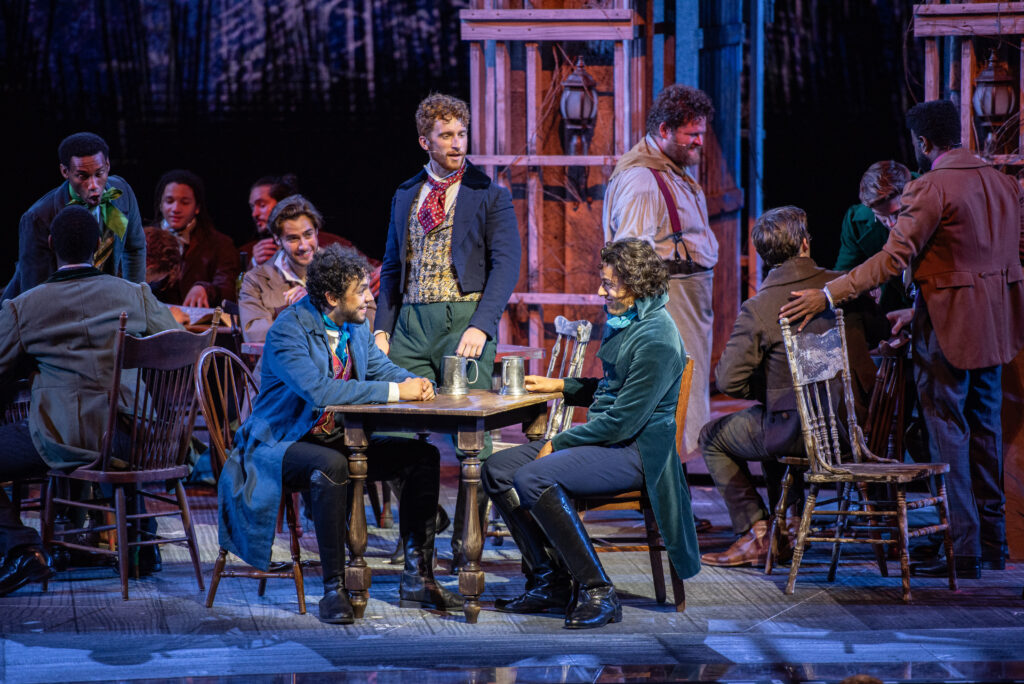
Cosette, Fantine’s daughter now living with Valjean, and student leader Marius’ love story is told ardently – with Gracie Annabelle Parker and Peter Neureuther the dashing couple. Marius’ mournful “Empty Chairs at Empty Tables” gets to me every time.
The company of 77 sings their hearts out. Twenty members of the St. Louis Symphony Chorus — soprano, alto, tenor and bass-baritone — joined 35 professional actors and 22 local youth performers on stage (and backstage)
The sumptuous, assured musical direction and conducting by virtuoso James Moore is significant. Working with Schonberg’s music score and lyrics by Herbert Kretzmer, from original French text by Alain Boublil and Jean-Marc Natel, he is using new orchestrations from Christopher Jahnke, Stephen Metcalfe and Stephen Brooker.
Moore’s body of work – 12 shows at the Muny– has been distinctive, bringing out the shadings in Stephen Sondheim’s “Sweeney Todd,” “West Side Story” (fervent Leonard Bernstein-level!) and “Gypsy,” but his efforts leading an epic “Les Miz” delivers an extraordinary aural treat. Special mention of associate music director Michael Horsley whose contributions are important.
And the exceptional 25-member orchestra, whose musicality is peerless, brings out all the feelings in this music. As a native of Belleville, Ill., I must mention recently deceased Bellevillian Vicky Smolik, who played trumpet in the Muny orchestra for 45 years. This opening production is dedicated to her memory.

From the bombastic opening chords and the score’s rich repetitive motifs, through the robust anthems, yearning expressions and tender love songs, the orchestra has produced numerous chill-inducing moments.
DirectorSklar-Heyn has made sure a zippy pace is maintained. Praise must be heaped on the stage manager Willie Porter and her three assistant stage managers Sarah Azizo, Eric Elz, and Joshua Vinik for the smooth flow of action.
The ace technical wizards included lighting designer Jason Lyons, scenic designer Ann Beyersdorfer, video designer Shawn Duan, and sound designers John Shivers and David Patridge.
Gail Baldoni’s costume design was mostly gritty, with class distinctions for the lavish wedding attire, nobility and military uniforms, and Ashley Rae Callahan’s wig design coiffed the characters’ appropriately.
“Les Miz” celebrates courage, conviction and community, and its recurring themes are timeless. You can see why it endures and feel how passionate both the performers and the audience are about it in this Muny opener to the 106th season.
The Muny presents “Les Misérables” at 8:15 p.m. nightly, June 17-23 on the outdoor stage in Forest Park. The show is 2 hours, 45 minutes, with an intermission. For more information, visit www.muny.org.
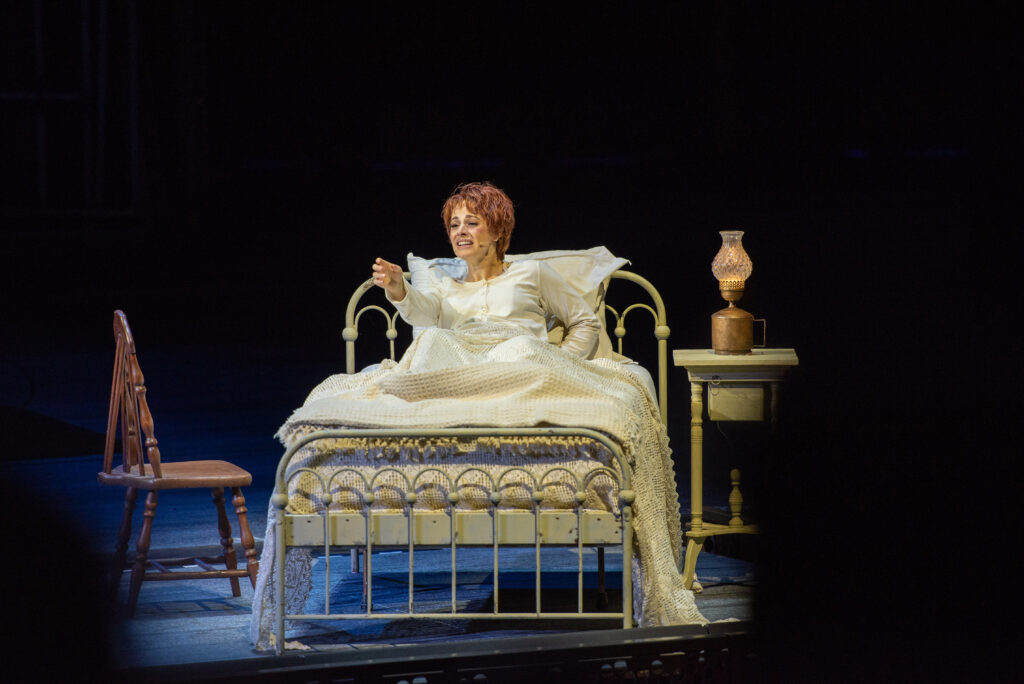

Lynn (Zipfel) Venhaus has had a continuous byline in St. Louis metro region publications since 1978. She writes features and news for Belleville News-Democrat and contributes to St. Louis magazine and other publications.
She is a Rotten Tomatoes-approved film critic, currently reviews films for Webster-Kirkwood Times and KTRS Radio, covers entertainment for PopLifeSTL.com and co-hosts podcast PopLifeSTL.com…Presents.
She is a member of Critics Choice Association, where she serves on the women’s and marketing committees; Alliance of Women Film Journalists; and on the board of the St. Louis Film Critics Association. She is a founding and board member of the St. Louis Theater Circle.
She is retired from teaching journalism/media as an adjunct college instructor.

